In the Studio: Awilda Sterling-Duprey
“I am interested in finding expressions, drawing with my eyes closed, blindfolde...

Andrea Carlson is an artist based in Grand Marais, Minnesota, recently relocated from Chicago, Illinois. Carlson received the Joan Mitchell Foundation’s Painters & Sculptors Grant in 2016 and was an Artist-in-Residence at the Joan Mitchell Center in Spring 2023. We interviewed her about her work and creative practice in April 2023. The following is an edited transcript of that conversation.
My past work critically considers the spaces in which the artwork is shown, and how space informs artwork. Places like museums and collections will often have a very complicated relationship with Indigenous people. I am Ojibwe and Scandinavian. When my work first started going into these spaces, I was thinking about all the ancestors and objects that these various collections have taken from Indigenous communities—how they [the ancestors] haven’t been given back, and how those spaces contextualize my own work.
Through my work, I try to make landscapes that are apart from the museum themselves. You could enter into my work, and that space might be a decolonial space within an institution. You're very aware as a viewer that the landscapes are paintings, not land, but you can't actually jump into the paper, you can't jump into that landscape. It becomes this vision for a decolonized space that you can't actually access.
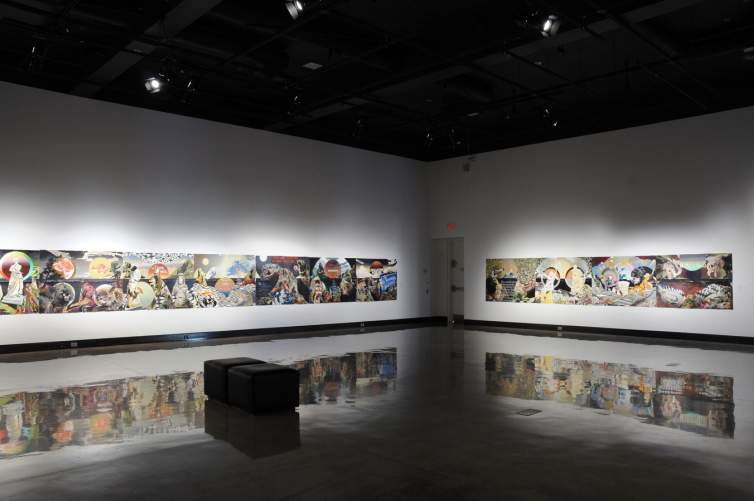
One of the materials that I've been using throughout my career is a thick watercolor paper that I can layer many mediums onto. People often, when they see documentation of my work, will assume that it's collaged elements, but it's all just hand-worked paper with gouache, watercolor, inks, oil and any material really that I come across. I can put it all on the singular surface of the paper.
The current body of work that I have been developing is leaping off of older work, where I was considering the place where my work was showing. Now, I'm considering my own artwork as a place within itself—that it is a place where I bring things to. In the past I was not so interested in autobiographical things—I wanted to put in things that I was studying, and have an external subject. Now I'm starting to look at myself as being a subject as well, and I've been putting objects and things that relate to personal narratives, to my family, to what I consider home and belonging. It is a weird process that feels very humbling, and I feel somewhat exposed through this work. It's not something that I'm comfortable with. And that's probably why I am moving from being much more concerned about museums and public collections towards this more introspective work that asks, “well, who am I?”
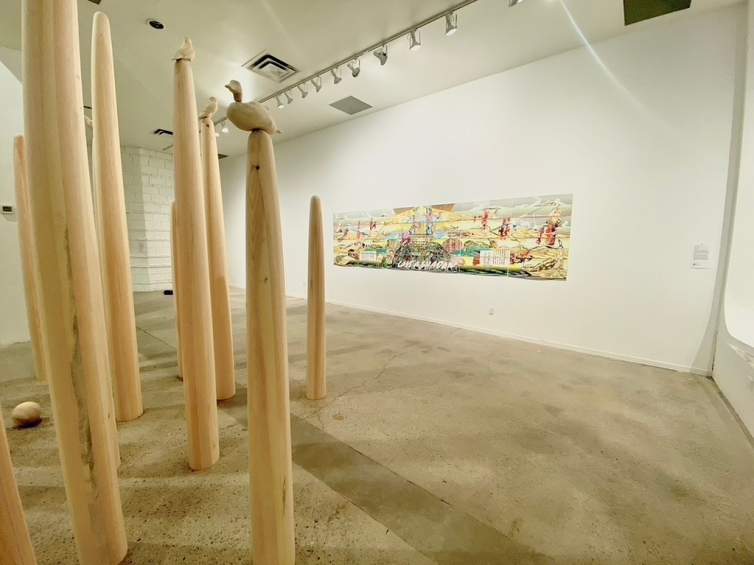
I have lots of reference materials that I cite in my work. I will produce a drawing or something that I'll look at and try to reproduce it. And in that reproduction, it's almost like playing operator with myself, where I'm trying to translate the shapes and forms and I abstract them in a way. I am my own filter and processing things through my body as I work. And then strangely enough, the work ends up being evidence of this performance that has taken place while I was making it. So I think of them as almost my snail trail of what's left over from something that has happened. I do try to put referential images in, not as a barrier, but as something that builds the work’s background.
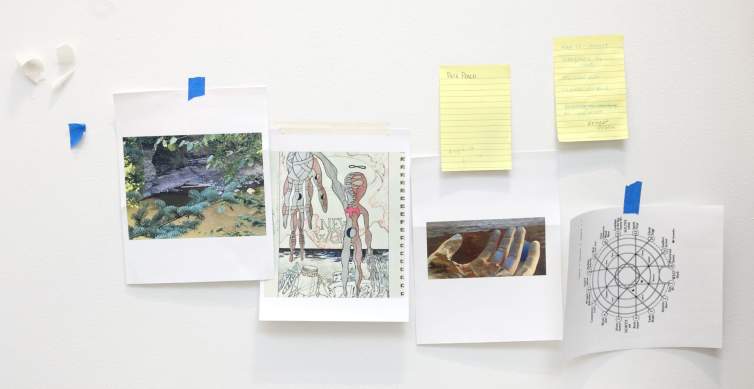
I'll often reference various objects that are important to my ancestry or are important to my family in particular. An object that has come up in a few works is this cowrie shell—the Obijiwe people call it the miigis shell, and we followed it from the St Lawrence Seaway to the Great Lakes in a really great, grand migration. In this particular piece, I put ancestors and people who have passed as almost like the miigis that I'm following. These are people who have gone before. My work can operate as its own memorial. I can put things into my work that I treasure and hold dear. And that's something that is new to my work, that I'm starting to see it as outlasting myself. And with that ability, I am able to carry out those things that I want to remember.
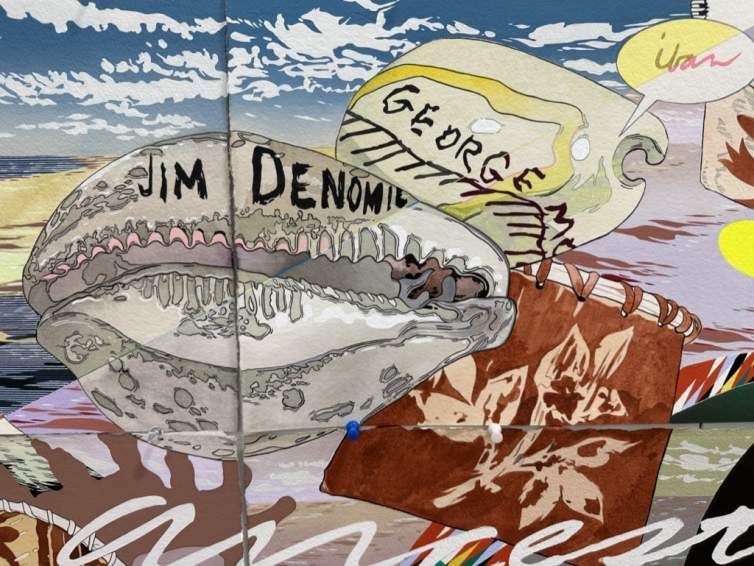
Here at the Joan Mitchell Center, I have very lofty goals. I haven't had a studio since the pandemic began. I was one of the artists that was in residence here at the Center in March 2020 and got sent home at the very beginning of the pandemic. I've been dreaming about returning to the residency for the last three years. And in that time, I've just been working in my living room, on the floor and on the dining room counter. So, I'm trying to take advantage of every moment that I have here in the space to do work that I haven't really had the opportunity to do over the course of the pandemic. I'd like to finish two large-scale pieces. I might only complete one.
One piece that I’m working on right now is called Ancestor and Descendant. The word in Ojibwe for both ancestor and descendant is the same word: Indaanikoobijigan. It means “the one who is tied to me through generations.” I like to think about how we often will think almost hierarchically of “the ancestors” and we become lesser and lesser fragments of that ancestor through the generations. But that's not necessarily an Indigenous concept. We're all kind of related and it's cyclical. Our word for descendant can also be our word for ancestor. We have these connections in time that aren't necessarily linear, or in one direction.


I feel like most of my paintings are landscapes, or seascapes where all of this debris has washed up on shore. Then over the years, I’ve started layering and stacking up landscapes. For example, the pieces in one of my series are four stacked landscapes tall, and I have other works that are ten stacked landscapes with these almost-prismatic lines and geography going through it. I think maybe, in a crude way, it's my way of illustrating that the land is stacked upon land. There's story upon story upon story, in a singular space. When we die, I don't know if we will go to heaven or go to the sky, but one thing that I am very certain of is that our bodies return to the earth. The earth takes back our narratives. They take back our stories, and sometimes people uncover them, but the earth pulls us back in—pulls us back to her.
I think that that's part of why I stack landscapes. The geometry works to make the landscape a prism. And even though this work is very two dimensional, I’m considering, “how do I put time and space into a very two dimensional space? How do I give it these filmic qualities? How do I put temporalities and transformation into a very static, stiff, two dimensional piece?”
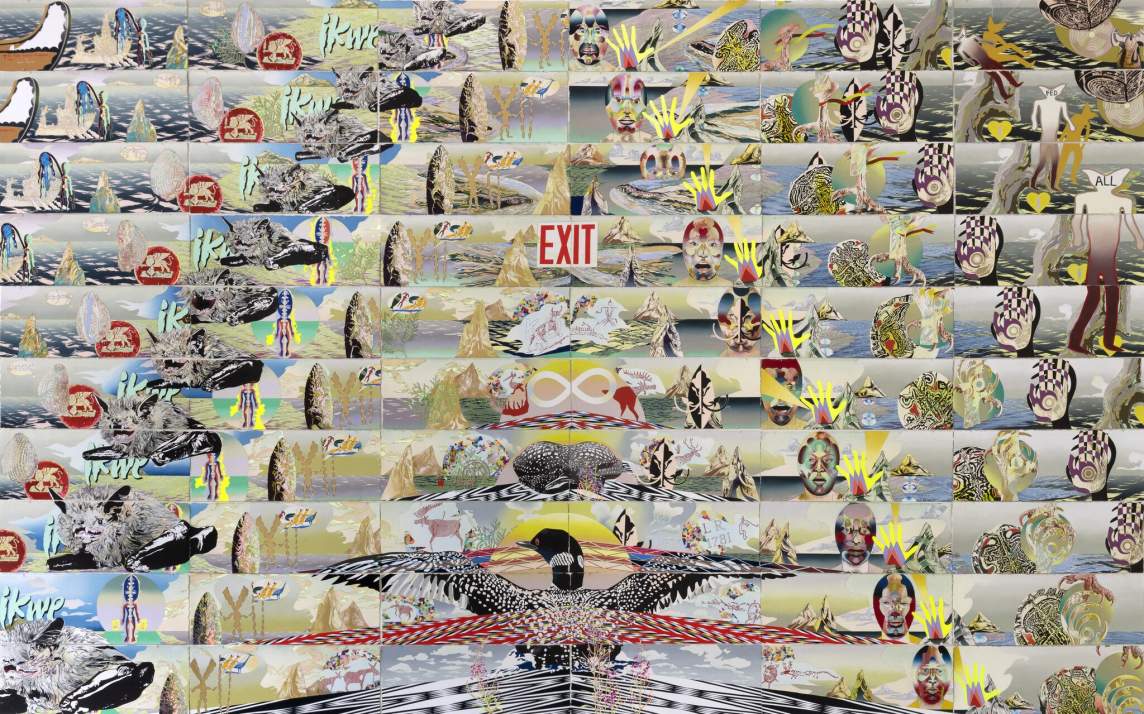
With the scale of the work being overpoweringly larger than our own bodies, I think that it operates more like a door than a window, because when you make something small, people feel like they can carry it or possess it. It's very possessable. If it's larger than your own body, you ergonomically relate to it differently. It consumes you. I want these landscapes to feel like you're on its stage, and it's not something that can be retrieved or taken.
I think it's also really important for artists of color and women who are in museums to take up a lot of space. I think that we should not minimize ourselves, but we should unfurl our arms and unapologetically have rights to the walls and displays, even in problematic spaces.
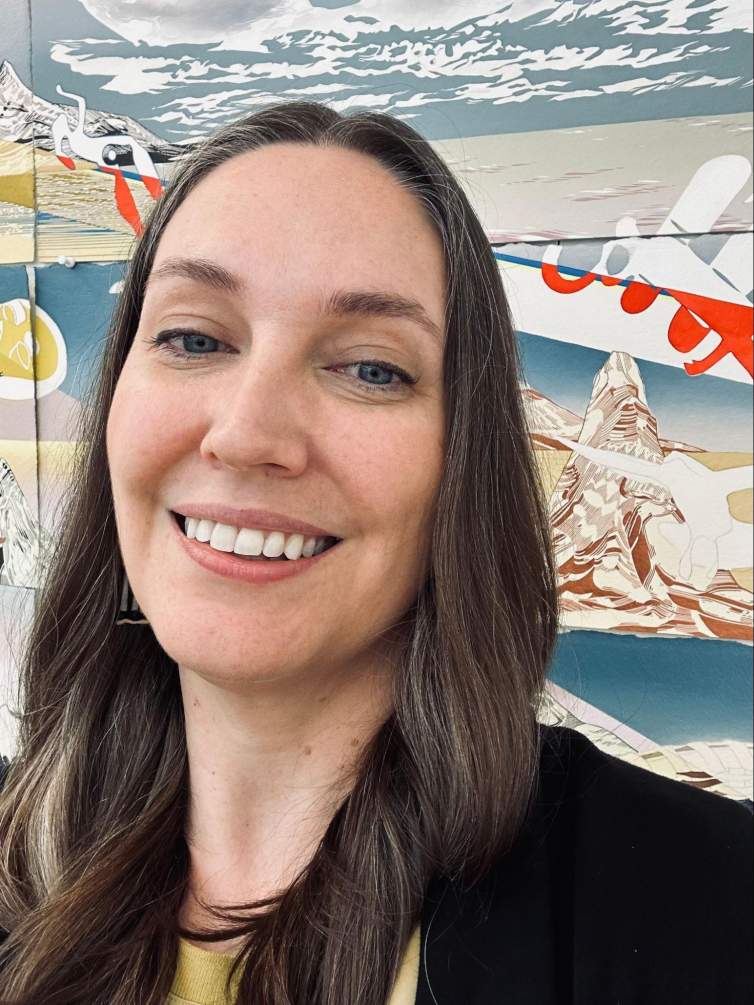
Interview by Sly Watts, editing by Melissa Dean and Jenny Gill. Learn more about Andrea Carlson’s work at mikinaak.com.